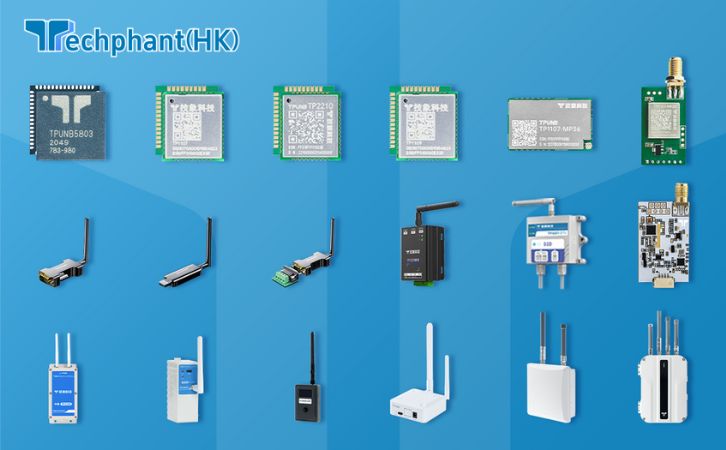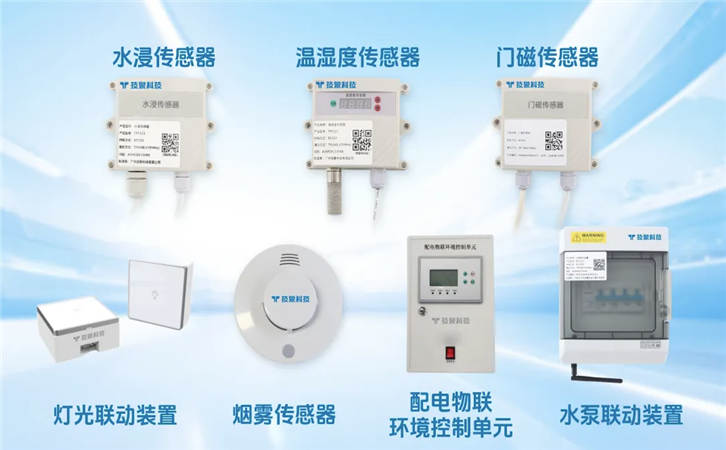The Industrial Internet of Things (IIoT) is revolutionizing manufacturing, logistics, and other industrial sectors by enabling real-time automation, monitoring, and data-driven decision-making. Sub-GHz wireless technologies, operating in frequency bands below 1 GHz (e.g., 433 MHz, 868 MHz, 915 MHz), are critical enablers of IIoT due to their long-range, low-power, and robust connectivity. These characteristics make Sub-GHz ideal for connecting sensors and devices in challenging industrial environments, such as factories, warehouses, and remote facilities. This article explores how Sub-GHz technologies enhance automation and monitoring in IIoT, detailing their applications, benefits, and challenges across four key areas.
I. Long-Range Connectivity for Large Industrial Sites
Sub-GHz technologies provide long-range connectivity, enabling IIoT networks to cover expansive industrial sites, such as factories, warehouses, or oil and gas fields, with minimal infrastructure. With ranges of 2-5 kilometers in obstructed environments and up to 15 kilometers in open areas, Sub-GHz protocols like LoRaWAN and Zigbee allow a single gateway to connect devices across large facilities, reducing deployment costs compared to Wi-Fi or cellular networks that require multiple access points.
For example, in a manufacturing plant, Sub-GHz sensors monitor machinery health, transmitting vibration or temperature data to a central gateway located kilometers away. In logistics hubs, Sub-GHz asset trackers monitor the location of pallets or vehicles across sprawling warehouses, streamlining inventory management. The low-frequency signals penetrate concrete walls, metal structures, and other obstacles common in industrial settings, ensuring reliable communication in non-line-of-sight conditions.
Challenges include regulatory constraints, such as duty cycle limits in Europe’s 868 MHz band (e.g., 1% transmission time), which restrict frequent data updates. Regional variations in Sub-GHz bands (e.g., 915 MHz in the U.S.) also necessitate region-specific hardware, increasing complexity. Despite these hurdles, Sub-GHz’s long-range capabilities enable scalable IIoT networks, supporting automation and monitoring across vast industrial environments with reduced infrastructure costs.
II. Low-Power Operation for Maintenance-Free Devices
Energy efficiency is a defining feature of Sub-GHz technologies, making them ideal for battery-powered IIoT devices that must operate for years without maintenance. Industrial environments often include remote or inaccessible locations, such as pipelines or high-bay warehouses, where frequent battery replacements are impractical. Sub-GHz protocols like LoRaWAN, Zigbee, and NB-IoT use low data rates (e.g., 0.3-50 kbps) and duty-cycling, where devices remain in sleep mode most of the time, waking only to transmit small data packets.
For instance, Sub-GHz sensors monitoring pressure in oil pipelines can operate on small batteries for 10-15 years, sending periodic updates to a gateway. In predictive maintenance, vibration sensors on factory equipment transmit alerts only when anomalies are detected, conserving energy. LoRaWAN’s adaptive data rate (ADR) optimizes power by adjusting transmission parameters based on distance, while NB-IoT’s power-saving modes, like Extended Discontinuous Reception (eDRX), further reduce consumption in cellular-based IIoT deployments.
Challenges include balancing transmission frequency with battery life, as high-frequency updates can drain batteries faster. Energy harvesting (e.g., vibration or thermal energy) is being explored to extend device lifespans, but inconsistent energy sources in industrial settings pose limitations. Nevertheless, Sub-GHz’s low-power operation ensures sustainable, maintenance-free IIoT deployments, enhancing operational efficiency and reducing costs.
III. Robust Signal Penetration in Challenging Environments
Industrial environments present unique challenges for wireless communication, with metal machinery, concrete structures, and electromagnetic interference from equipment disrupting signals. Sub-GHz technologies excel in these conditions due to their ability to penetrate obstacles and maintain connectivity. The longer wavelengths of Sub-GHz signals pass through walls, pipes, and other barriers more effectively than 2.4 GHz or 5G signals, ensuring reliable data transmission in complex industrial settings.
In a factory, Sub-GHz sensors monitor temperature or humidity in production lines, transmitting data through metal enclosures to gateways. LoRaWAN’s Chirp Spread Spectrum (CSS) modulation enhances robustness by spreading signals across a wide bandwidth, reducing interference from industrial equipment or other wireless devices in the unlicensed spectrum. In mining operations, Sub-GHz networks connect sensors deep underground, where higher-frequency signals fail, enabling real-time monitoring of air quality or equipment status.
Interference in crowded Sub-GHz bands remains a challenge, as other devices (e.g., remote controls) may operate in the same spectrum. Techniques like frequency hopping and adaptive channel selection mitigate this, but require careful network design. Additionally, Sub-GHz’s low data rate (e.g., 243-byte payload limits in LoRaWAN) restricts its use for high-bandwidth applications like video-based quality control. Despite these constraints, Sub-GHz’s robust penetration makes it a reliable choice for IIoT monitoring and automation in harsh environments.
IV. Integration with Automation and Analytics Platforms
Sub-GHz technologies enhance IIoT by integrating with automation systems and analytics platforms, transforming sensor data into actionable insights for process optimization and predictive maintenance. Sensors collect data on equipment performance, environmental conditions, or asset locations, which Sub-GHz networks transmit to gateways or cloud platforms. Machine learning algorithms analyze this data to predict equipment failures, optimize production schedules, or improve worker safety.
For example, in a smart factory, Sub-GHz sensors monitor motor vibrations and feed data into an analytics platform that predicts maintenance needs, reducing downtime. In logistics, Sub-GHz trackers on inventory items integrate with warehouse management systems, automating restocking processes based on real-time data. LoRaWAN gateways often include edge computing capabilities to process data locally, reducing latency and cloud costs, while NB-IoT supports seamless integration with cellular backhauls for remote facilities.
Challenges include ensuring interoperability between Sub-GHz devices and automation platforms, as proprietary protocols can complicate integration. Security is critical, with Sub-GHz networks using AES-128 encryption to protect data, though vulnerabilities like jamming or spoofing require robust countermeasures. Data compression and aggregation are also necessary to manage Sub-GHz’s limited bandwidth, ensuring efficient transmission of critical insights. By enabling integration with automation and analytics, Sub-GHz drives intelligent, data-driven industrial operations.
Conclusion
Sub-GHz technologies are transforming Industrial IoT by providing long-range, low-power, and robust connectivity tailored to the demands of automation and monitoring. Their ability to cover large industrial sites with minimal infrastructure supports applications like asset tracking and predictive maintenance, while low-power operation ensures sustainable, maintenance-free deployments. Robust signal penetration delivers reliable communication in challenging environments, and integration with analytics platforms enables data-driven optimization. Despite challenges like spectrum interference, regulatory constraints, and bandwidth limitations, Sub-GHz protocols like LoRaWAN, Zigbee, and NB-IoT are pivotal in enhancing efficiency, safety, and scalability in industrial settings. As Industry 4.0 advances, Sub-GHz will continue to drive innovation, powering the next generation of smart industrial ecosystems.


